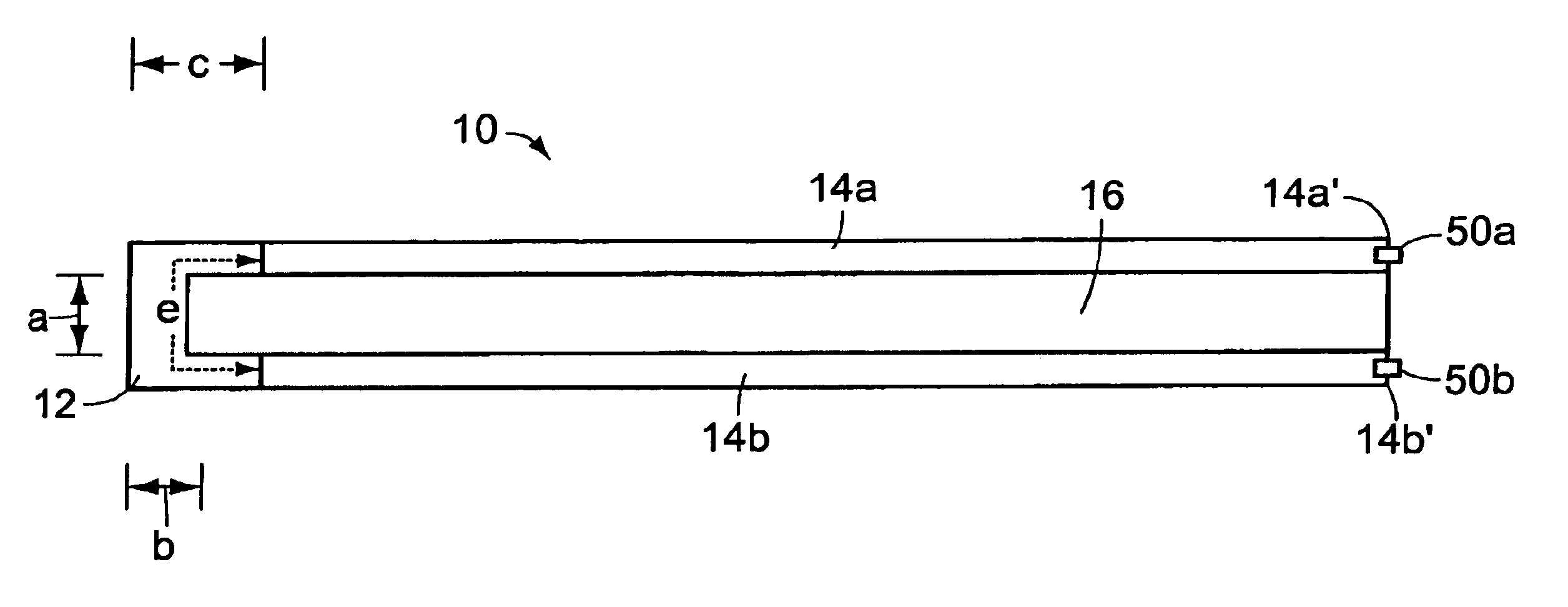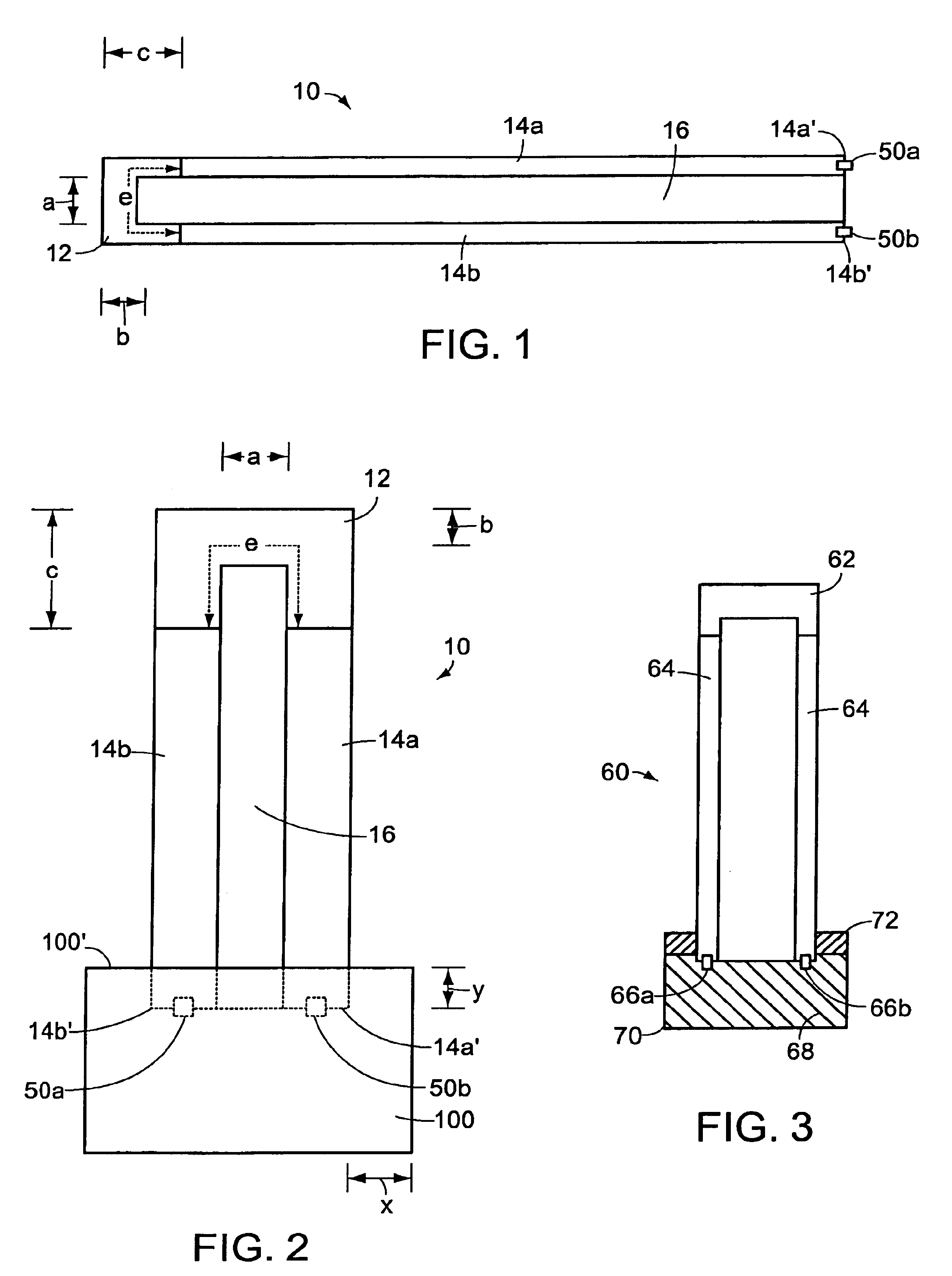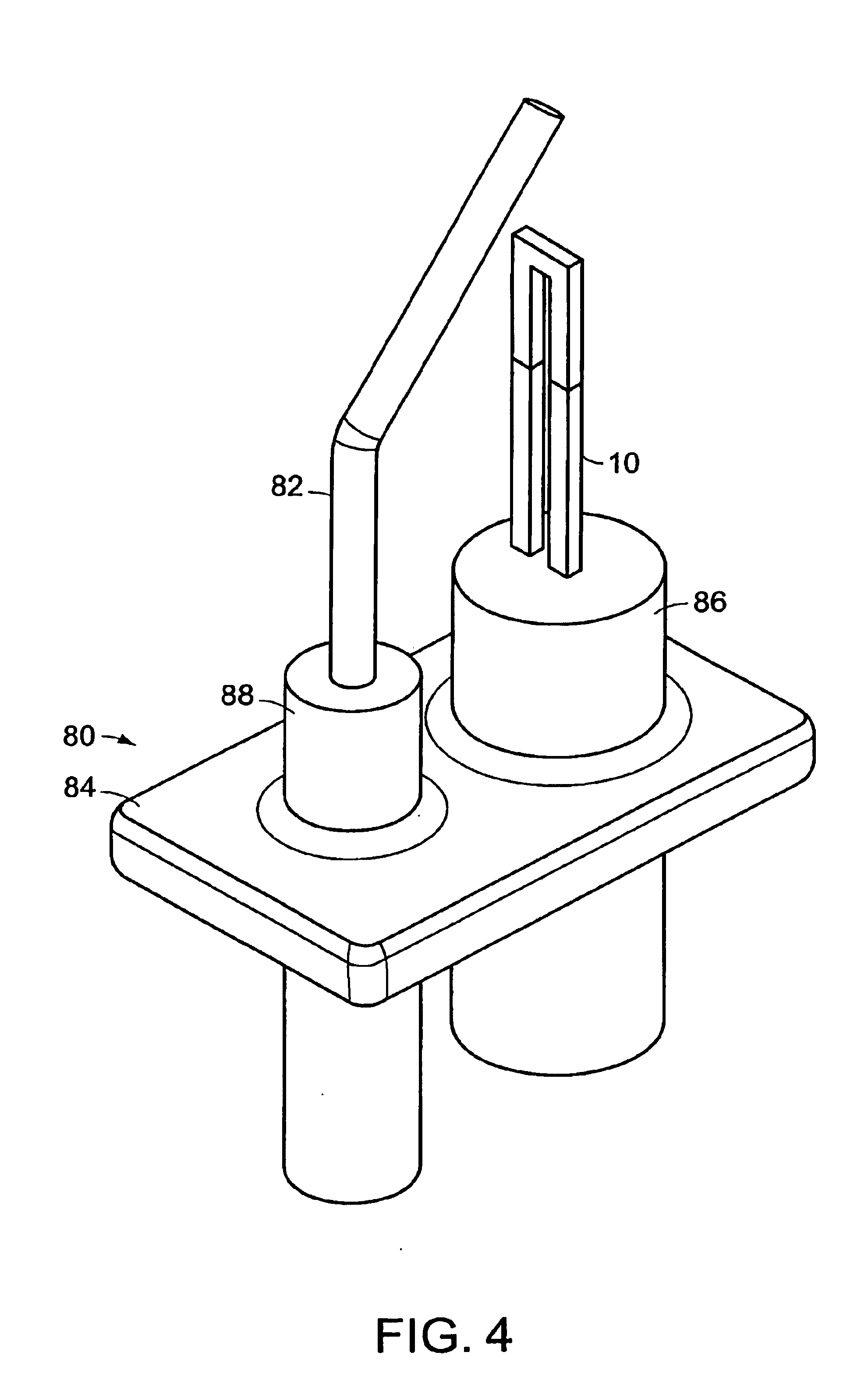Ceramic igniters with sealed electrical contact portion
a ceramic igniter and electrical contact technology, applied in the field of ceramic igniters, can solve the problems of preventing optimal functioning, affecting the operation of the cooking edifice, etc., and achieve the effect of enhancing the resistance to undeired moisture and/or oxygen penetration
- Summary
- Abstract
- Description
- Claims
- Application Information
AI Technical Summary
Benefits of technology
Problems solved by technology
Method used
Image
Examples
example 1
[0089]An igniter of the invention is suitably prepared as follows.
[0090]Hot zone and cold zone compositions were prepared for a first igniter. The hot zone composition comprised 70.8 volume % (based on total hot zone composition) AlN, 20 volume % (based on total hot zone composition) SiC, and 9.2 volume % (based on total hot zone composition) MoSi2. The cold zone composition comprised 20 volume % (based on total cold zone composition) AlN, 20 volume % (based on total cold zone composition) SiC, and 60 volume % (based on total cold zone composition) MoSi2. The cold zone composition was loaded into a hot die press die and the hot zone composition loaded on top of the cold zone composition in the same die. The combination of compositions was densified together under heat and pressure to provide the igniter.
example 2
[0091]Electrical contacts were applied with a braze joint to two essentially identical igniters produced as described above in Example 1. Those two igniters are referred to as Igniter A and Igniter B below.
[0092]Igniter A was further processed in accordance with the invention. Specifically, Igniter A with electrical contacts thereon was placed in a mold and a ceramoplastic material available from Mykroy / Mycalex Ceramics added to the mold to encapsulate the contacts to provide an element of the design generally represented in FIG. 2.
[0093]For Igniter B, a cylindrical ceramic housing element was placed around the electrical contacts. An epoxy sealant was added to fill the housing element and encapsulate the contacts. The epoxy sealant was allowed to dry to cure.
[0094]The encapsulated electrical contact ends of each of Igniters A and B were placed in colored penetrating dye for about ten minutes. Upon cross-section analysis by visual (naked eye) inspection, no fluid was absorbed into t...
PUM
| Property | Measurement | Unit |
|---|---|---|
| temperature | aaaaa | aaaaa |
| thickness | aaaaa | aaaaa |
| thickness | aaaaa | aaaaa |
Abstract
Description
Claims
Application Information
 Login to View More
Login to View More - R&D
- Intellectual Property
- Life Sciences
- Materials
- Tech Scout
- Unparalleled Data Quality
- Higher Quality Content
- 60% Fewer Hallucinations
Browse by: Latest US Patents, China's latest patents, Technical Efficacy Thesaurus, Application Domain, Technology Topic, Popular Technical Reports.
© 2025 PatSnap. All rights reserved.Legal|Privacy policy|Modern Slavery Act Transparency Statement|Sitemap|About US| Contact US: help@patsnap.com



